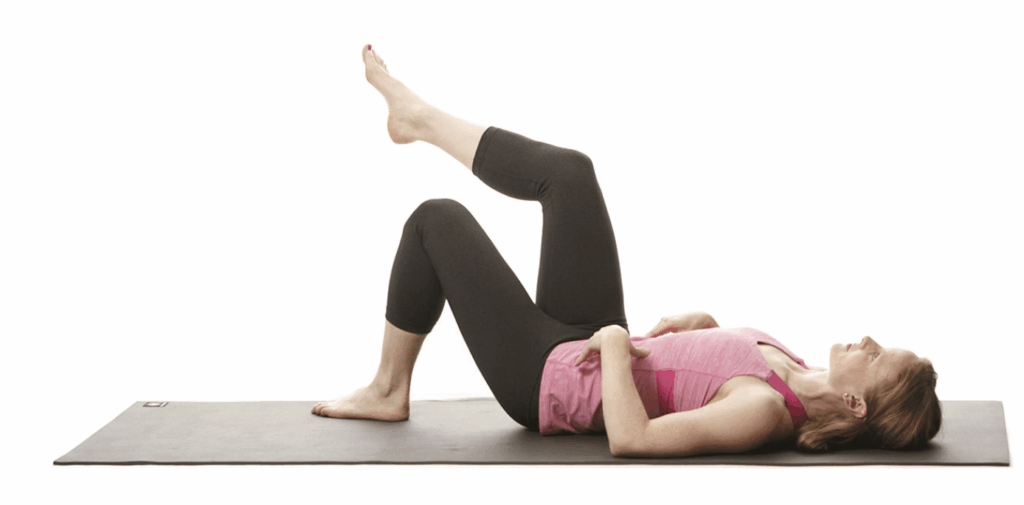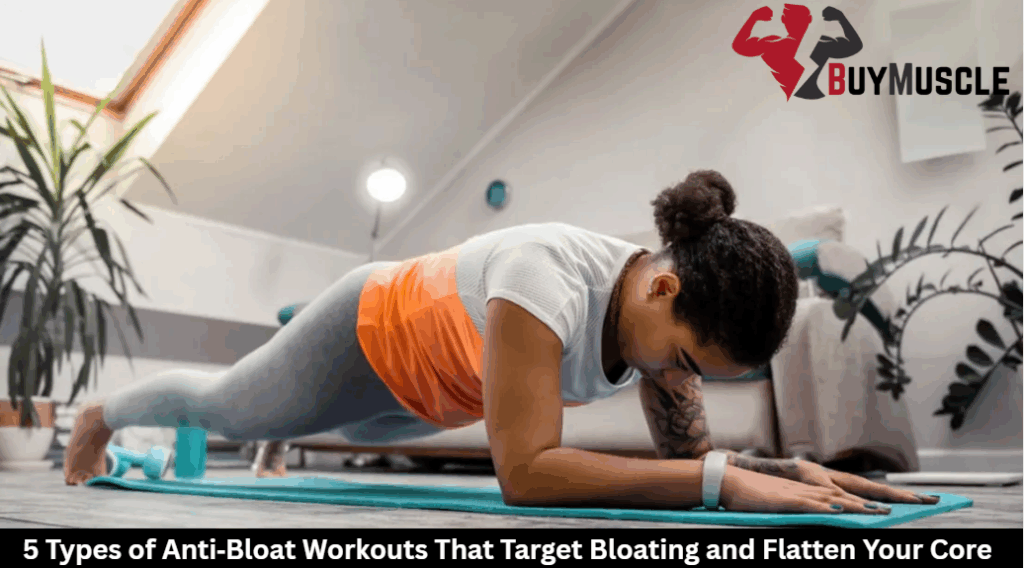You’ve tried adjusting your diet and drinking more water, but that uncomfortable bloated feeling still lingers. What if the solution isn’t just about what you eat, but how you move? Specific workouts can actually help your body release trapped gas, improve digestion, and strengthen your core, all while easing that tight, swollen sensation.
The right exercises might be the missing piece you’ve been searching for to feel comfortable in your skin again.
How Exercise Helps Reduce Bloating
When you’re dealing with uncomfortable bloating, movement might be the last thing on your mind. Still, it’s actually one of the most effective ways to find relief.
Physical activity stimulates your digestive system, encouraging gas and waste to move through your intestines more efficiently. Anti-bloat exercise increases blood flow to your organs, supporting digestion while reducing water retention that contributes to puffiness.
Core engagement during movement massages your internal organs, promoting healthy bowel function. Even gentle activities activate your lymphatic system, helping flush excess fluids and toxins. Regular movement also strengthens your abdominal muscles, improving posture and reducing pressure on your digestive tract, which are the key factors in preventing future bloating episodes.
Best Types of Workouts for Anti-Bloat Benefits
When you’re dealing with uncomfortable bloating, specific workout styles can provide faster relief than others. Gentle core activation, low-impact cardio, dynamic stretching, yoga and Pilates moves, and standing core workouts each target bloating through different mechanisms. Let’s explore how these five workout types can help flatten your core and ease digestive discomfort.
Gentle Core Activation
While high-intensity workouts might worsen bloating, gentle core activation exercises offer the perfect balance of movement and relief. Target your deep core muscles without creating excessive abdominal pressure that could worsen discomfort.
Start with pelvic tilts. They’re your foundation for abdominal pressure relief. Lie on your back, knees bent, and slowly tilt your pelvis upward while breathing deeply. This de-bloating exercise promotes better digestion through controlled movement.
Dead bugs provide deep core activation while maintaining neutral spine alignment. You’ll strengthen your transverse abdominis, which supports proper digestive function.
Diaphragmatic breathing isn’t just relaxation; it’s fitness for digestion. Place one hand on your chest, another on your belly, and breathe deeply into your abdomen. This gentle core activation massages internal organs and reduces bloating naturally.

Low-Impact Cardio
After completing gentle core work, incorporate low-impact cardio that stimulates your digestive system without jarring your body. Walking stands out among low-impact workouts for gut health, requiring just 20-30 minutes to boost circulation and movement throughout your abdomen.
Reduce belly bloat effectively through cycling, which massages internal organs while maintaining a steady rhythm.
Anti-bloat cardio like rebounding on a mini-trampoline creates gentle bouncing that encourages lymphatic drainage and tackles fluid retention. Swimming offers full-body engagement without impact stress, promoting natural breathing patterns that aid digestion.
Keep your pace moderate. Aim for movement that feels energizing, not exhausting. These activities enhance blood flow to digestive organs while avoiding the high-intensity movements that can worsen bloating symptoms.
Dynamic Stretching & Mobility
Beyond cardio movements, dynamic stretching releases tension in your digestive system through controlled, flowing motions that massage internal organs. This bloating relief workout is particularly effective when combining pelvic tilts and twists with hip circles and side bends. These movements compress and release your abdominal area, promoting gas release and improved circulation.
Your dynamic stretching & mobility routine should include cat-cow stretches, seated spinal twists, and knee-to-chest pulls. These yoga for digestion poses stimulate your intestines while gently stretching tight hip flexors that can restrict proper breathing.
As you move through each position, flatten your stomach by encouraging trapped gas to move through your system. Practice these stretches for 10-15 minutes daily, focusing on smooth, controlled movements rather than static holds.

Yoga and Pilates Moves
When you’re dealing with uncomfortable bloating, specific yoga and Pilates moves target your digestive system more effectively than traditional core workouts. Cat-cow pose massages your internal organs while improving spinal mobility. Wind-relieving pose (Pawanmuktasana) directly addresses trapped gas and abdominal bloating by compressing and releasing your digestive tract.
Your core strengthening routine should include Pilates leg lifts, which engage deep abdominal muscles without creating excess pressure. Bridge pose promotes postural correction while stimulating digestion through gentle inversion. Child’s pose releases tension in your lower back and belly.
Try holding each position for 30-60 seconds, breathing deeply through your nose. These movements encourage gas release, improve circulation, and activate your parasympathetic nervous system, which controls digestion. You’ll notice immediate relief as these poses gently massage your organs.
Standing Core Workouts
Standing core workouts offer a powerful alternative to floor-based exercises for beating bloat. These vertical movements engage your entire core while promoting better circulation and digestion. You’ll find knee drives particularly effective, alternate lifting each knee to hip height while maintaining proper posture. Add oblique reaches by extending one arm overhead and bending sideways, targeting those stubborn love handles that worsen bloating’s appearance.
Bodyweight circuits combining squats, lunges, and standing marches keep you moving continuously, which helps gas move through your system. You’re also strengthening your transverse abdominis without the pressure that traditional crunches create. Standing exercises let gravity assist your digestive process while building functional strength that improves your posture throughout the day.

Timing and Frequency for Optimal Results
If you’re wondering how often to do anti-bloat workouts for the best results, find a balance between consistent movement and adequate recovery. Aim for 20-30 minutes of gentle exercise 4-5 days per week. On days you’re feeling particularly bloated, prioritize low-impact activities like walking or stretching rather than intense core work.
Time your workouts strategically. Exercise first thing in the morning to kickstart digestion, or wait 30-60 minutes after eating to avoid discomfort. Light movement immediately after meals, like a 10-minute walk, can prevent bloating from developing.
Listen to your body’s signals. If you’re experiencing severe bloating, opt for restorative yoga or breathing exercises instead of vigorous activity. Rest days allow your digestive system to reset and prevent overexertion.
Lifestyle and Recovery Considerations
Exercise alone won’t solve chronic bloating. Your daily habits and recovery practices play an equally important role. Prioritize hydration by drinking at least eight glasses of water daily, which helps flush excess sodium and supports digestion. Focus on gut-friendly foods like yogurt, kefir, and fiber-rich vegetables while limiting processed foods high in sodium.
Cut back on carbonated drinks that introduce extra gas into your system. Instead, sip herbal teas like peppermint or ginger between meals.
Your recovery matters too. Aim for 7-9 hours of quality sleep, as poor rest disrupts digestive hormones. Manage stress through meditation or deep breathing, since chronic tension slows digestion and worsens bloating. These lifestyle adjustments amplify your workout results.
Signs Your Workout Is Helping (or Not)
How do you know if your anti-bloat workouts are actually working? You’ll notice your stomach feels less tight and distended within 30-60 minutes after exercising. Your clothes fit more comfortably around your waistline, and you’ll experience improved digestion with more regular bowel movements.
Physical signs include reduced visible swelling, less pressure in your abdomen, and easier breathing. You’ll also pass gas more easily and feel lighter overall.
However, if bloating persists despite consistent exercise, worsens after workouts, or comes with severe pain, something’s wrong. These symptoms might indicate food intolerances, IBS, or hormonal imbalances requiring medical attention. Track your progress in a journal, noting which exercises provide relief and when bloating occurs to identify patterns and optimize your routine.
Frequently Asked Questions
Should I Eat Before Anti-Bloat Workouts?
Avoid large meals before exercising. Instead, eat a light snack 30-60 minutes prior if you’re hungry. Heavy foods can worsen bloating and make movement uncomfortable. Stay hydrated with small water sips throughout.
Which Supplements Enhance Anti-Bloat Exercise Results?
Probiotics, digestive enzymes, and magnesium can boost your anti-bloat exercise benefits. Peppermint oil capsules help reduce gas, while ginger supplements ease digestion. Always consult your doctor before adding new supplements to your routine.
Can Anti-Bloat Workouts Help With Menstrual Bloating?
Yes, you’ll find relief from menstrual bloating through gentle movement. Try yoga poses, walking, and pelvic tilts to reduce water retention and cramping. These exercises improve circulation and ease hormonal bloating when you’re on your period.
What Breathing Techniques Reduce Bloating During Exercise?
Practice diaphragmatic breathing by inhaling deeply through your nose, expanding your belly, then exhaling slowly through pursed lips. This technique massages internal organs, reduces tension, and helps release trapped gas while you’re exercising for better comfort.
Are There Specific Anti-Bloat Exercises for Beginners?
Yes, you’ll benefit from gentle moves like pelvic tilts, walking, and cat-cow stretches. Start with diaphragmatic breathing exercises and simple knee-to-chest holds. These beginner-friendly options won’t overwhelm your system while effectively reducing uncomfortable bloating.








